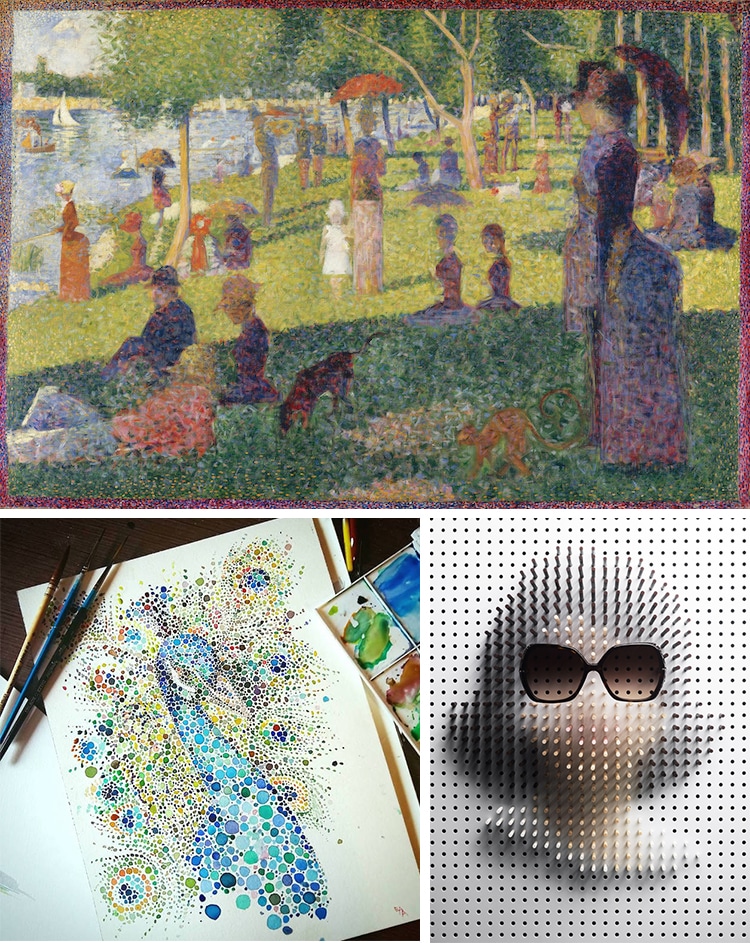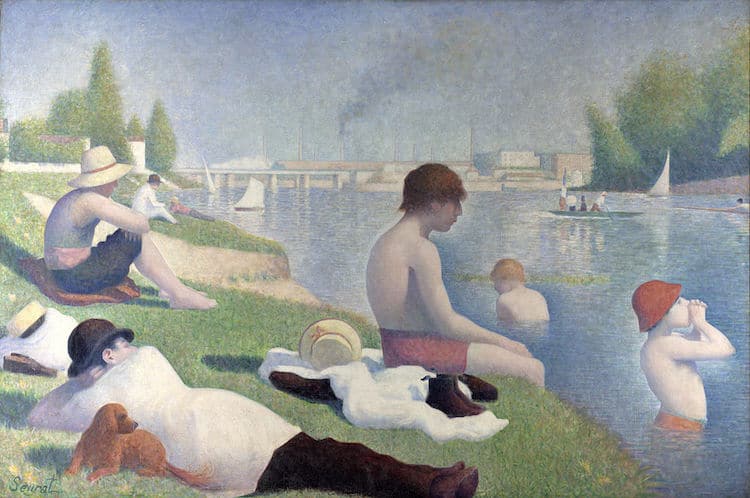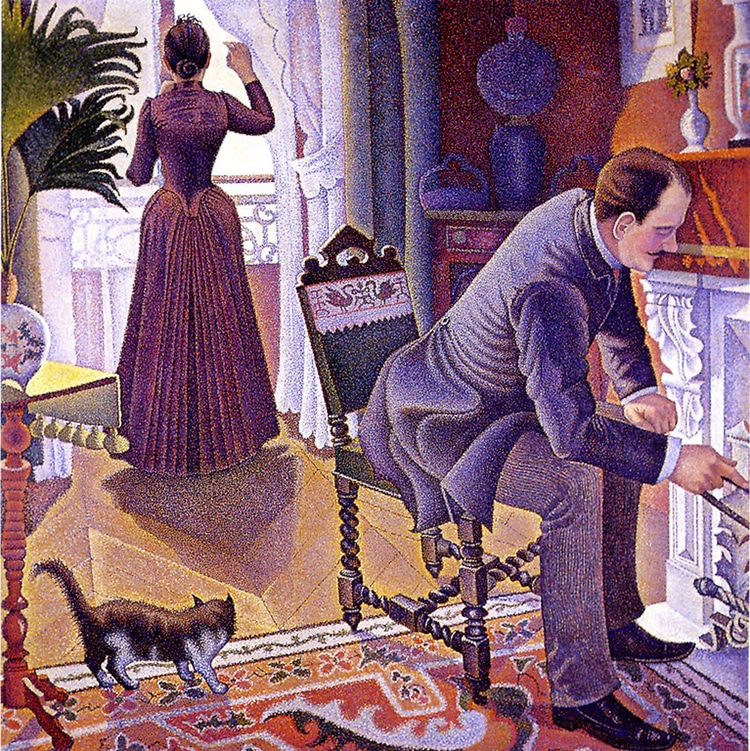
Neo-Impressionists Georges Seurat and Paul Signac pioneered a painting technique, dubbed Pointillism, that was revolutionary for its time. Bored of traditional paintings, artists of the era were searching for new ways to make “impressions” of landscapes and day-to-day life. Seurat and Signac looked to science for inspiration, and discovered how to trick the eye into seeing more in a painting than the sum of its parts: an arrangement of colored dots.
Informally known stippling art or dot art, since its inception, Pointillism has influenced many artists working across a diverse range of mediums, and today we see traces of it in modern art, fashion, and tattoos.
What is Pointillism?
Part of the Post-Impressionist movement, Pointillism is the technique of painting with distinct dots of color, which are meticulously applied in patterns to compose a cohesive image.
While Impressionists, such as Claude Monet and Vincent van Gogh, often used small dabs and strokes of paint as part of their technique, Pointillism artists took this idea a step further, by painting tightly packed, individual dots of pure color. When viewed from afar, the viewer’s mind and eye blur the dots together to create detailed images, comprising a fuller range of tones than the dots provide alone. The term “Pointillism” was in fact coined by art critics in the late 1880s to ridicule the works of these artists. Little did they know that the term would be used today as a positive association for some of the world’s most renowned master painters.
Influential Pioneer Artists of Pointillism
Georges Seurat

“A Sunday Afternoon on the Island of La Grande Jatte” (1884-1886) by Georges Seurat {{PD-US}} via Wikimedia Commons

“Bathers at Asnières” (1884) by Georges Seurat {{PD-US}} via Wikimedia Commons
The first pioneer of Pointillism was French painter Georges Seurat, who founded the Neo-Impressionist movement. One of his greatest masterpieces, A Sunday Afternoon on the Island of La Grande Jatte (1884–1886), was one of the leading examples of Pointillism. The dotty composition depicts 19th century Parisians relaxing on the River Seine. One of his other works painted shortly before—titled Bathers at Asnières (1884)—mirrors the riverbank scene. In this piece, the bathers are doused in light, while most of the people in the …Sunday Afternoon… painting are hidden in shade. Both pieces were painted on large canvases with dots of oil paint in a range of summer hues.
Paul Signac

“The Pine Tree at Saint Tropez” (1909) by Paul Signac {{PD-US}} via Wikimedia Commons
Another artist to adopt the revolutionary style was Paul Signac, who studied the science of dot art with Seurat. Since 1886, the French artist worked in this style throughout the entirety of his career, and carried on producing a large collection of Pointillism artwork, even after Seurat died in 1891, aged just 31. Among his most well-known works is The Pine Tree at St. Tropez, which depicts a brightly colored pine tree in the south of France; a place where the artist spent his time each summer. In another, titled Un Dimanche (A Sunday), Signac’s close-together, vibrant oil paint daubs depict a Parisian couple and their cat on a Sunday afternoon. This is an example of how Pointillism artists created clearer pictures: by painting smaller dots, closer together.

“Un Dimanche (A Sunday)” (1888-1890) by Paul Signac {{PD-US}} via Wikimedia Commons
End of the Golden Age of Pointillism
By the 1890s, Pointillism had reached its peak, with many artists of the time choosing to adopt the technique. However, even though the golden age of Pointillism is now over, many of the concepts and ideas still continue to be used by artists today, in many different mediums.
